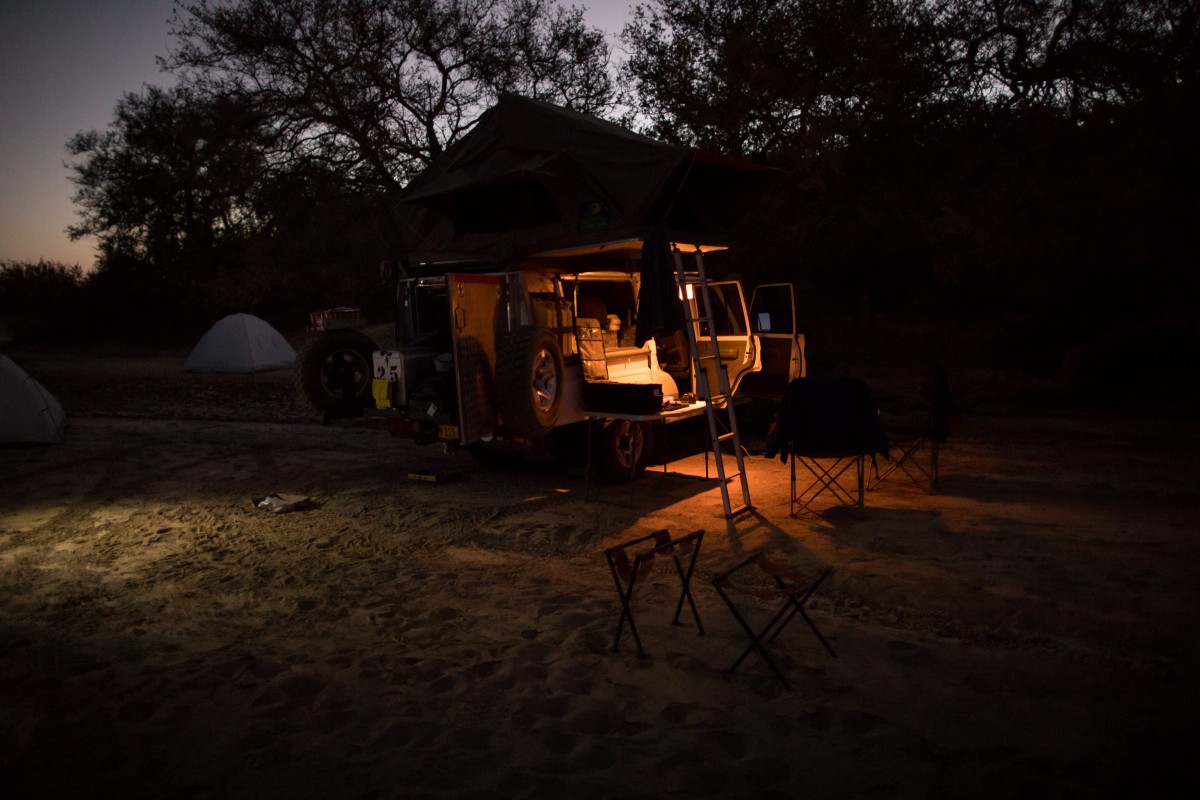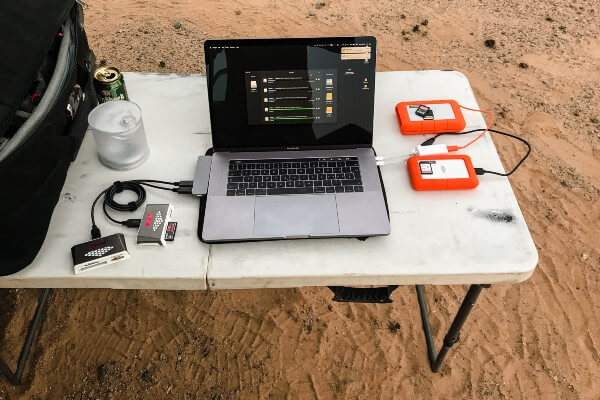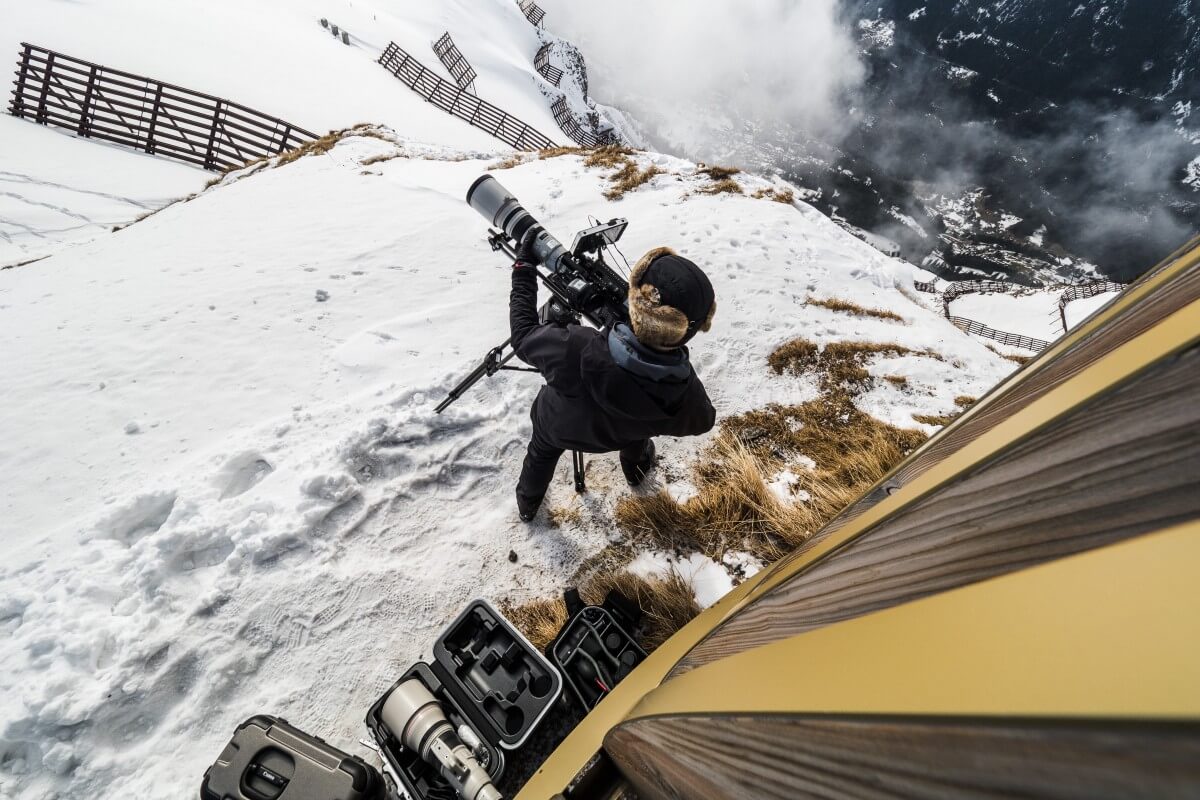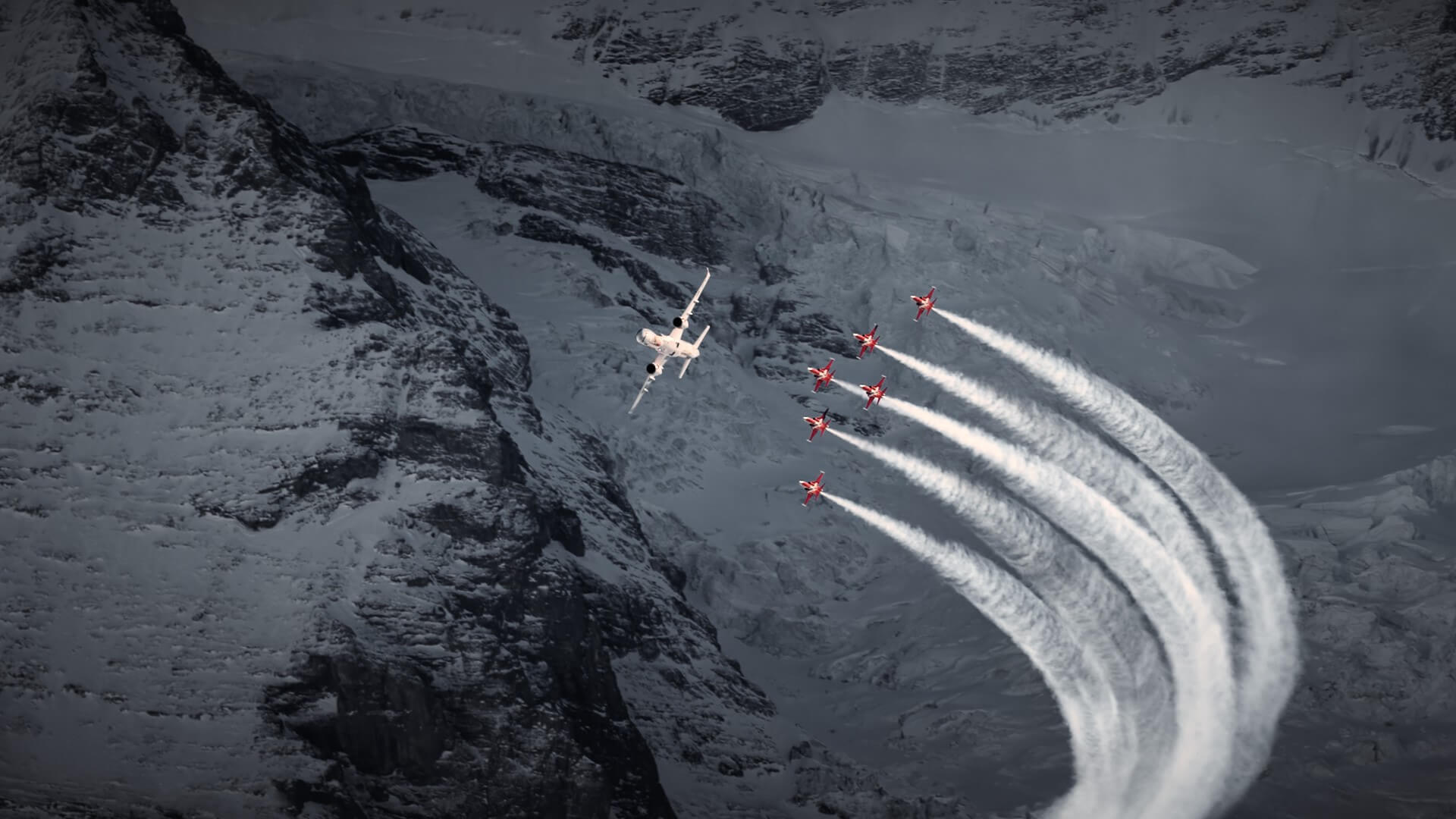Namibian sands vs. Alpine Ski Cups
Kevin Blanc of LAUSCHSICHT tells about their modus operandi.

Kevin Blanc of LAUSCHSICHT shares his modus operandi.

You might have heard of LAUSCHSICHT before, through their Canon C300 Mk II review and 360° filmmaking guide. Based in Zürich, Switzerland, LAUSCHSICHT has a knack for creating breathtaking videos, with rich colors and scenery.
Paul Matthijs had a chat with LAUSCHSICHT’s Kevin Blanc about their signature lush run-and-gun style. How does a 3-week desert shoot in Namibia compare to a downhill ski world cup, with just a 4-hour turnaround time? How to maintain overall quality in your productions?
Impact
“We care about two things: we don’t want to destroy a mood on-set, we want to move things naturally without being intimidated by gear or lights or a big team. And I want to be able to move around, look for the perfect shot and angle.
If you’re in a less-documentary type production, where everything is staged, then having a really fast camera in terms of interaction with it, is maybe not that important.
I think it’s key to keep the impact of the crew on location as low as possible, and then get the maximum amount of information in the picture. It’s a tricky combination to have.”
Agile
“End of 2017, we went to Namibia for Meine Namibia Safaris, a travel company. Three weeks of driving through Namibia, capturing the beauty of it all. Such a production is always a sort of a mixture between a holiday and work, with lots of work and not so much holiday, but beautiful nonetheless.

We usually shoot with Canon Cinema cameras, but this time, because of its size, we went with the Panasonic GH5 as the primary camera. We also brought some 360° cams, 3 or 4 GoPro’s, two drones and a Canon 5D Mark IV. And quite a few batteries; we had to pack 100 KG between the two of us.
Most of our productions are based around such an agile setup; we go on location and then enhance this location — with all the gear you usually use on larger productions but trying to stay close to reality. We like being small and flexible; all battery-powered, while maintaining a big-looking result.

It’s why we work with our clients from idea until delivery. I would be frustrated about shooting and then handing off all the shots. This way, we can carefully take it from production to the next stage, and by doing so, we can pay a lot of attention to detail. Because we know what we can do in post, we can adjust the way we shoot.”
Batteries
“Since there’s no way to source hard drives in Namibia, we brought all of our storage with us; all Rugged Thunderbolt RAIDs and the 4TB regular Ruggeds from LaCie. When prepping, you try to estimate an amount of GB per day based on the data rate. I simply doubled that. We knew we had enough time in the evenings to offload everything.

Our biggest challenge was batteries. During the shoot, you take power from an inverter in the car, and you charge the laptops and all other gear for the night while on the go. But when stationary, you only have the batteries. That gave us juice for about two hours, with all disks and cards connected. Using bus-powered Thunderbolt Ruggeds plus the internal SSD for offloading made sure we weren’t slowed down. We prefer using the RAID drives, by the way; they’re a lot faster than regular hard drives.”


Canon
“As said, we prefer shooting with Canon Cinema camera. With the Canon 200/300/700, you have proxies right away. You can not really edit DJI Phantom 4 Pro and GoPro material directly in an efficient way; the same is true for Panasonic GH5 clips. Apart from that, we prefer using the Canons because of the autofocus, colors, dynamic range and batteries. The amount of flexibility you have with the Cinema line from Canon is pretty unmatched, I think.
All of the BMD and comparable cameras have no chance against Canon regarding color and low light performance, except maybe Sony. Battery life is a problem with BMD, and of course with larger cams like ARRI and RED as well. For our kind of production, if you want to keep it lightweight, fast, and still have everything you need in post, these cameras are quite exceptional.

If you’d handover a C300 to RED and ARRI people, and give them some time to appreciate what it can do, especially in terms of focus, then it’s really hard to go back. With a gimbal, we did stuff you could never do otherwise — just because of the focus. I can shoot an interview and keep an aperture of 1.4 and don’t worry about it — it just tracks the front eye and does a perfect job of staying focused. I don’t know any other camera that can do that.
Of course, you could have a small Epic or Weapon, but then you’re running around with V-Mounts, and you need the cam always on because booting it takes time, and you need an external display because you need proper focus peaking. I keep being impressed by Canon. The package as a total is just very compelling.”
Downhill Skiing
“We also work for Swiss International Air Lines, the official airline of Swiss-Ski and the International Lauberhorn Races. Our goal for this client is to capture SWISS’s engagement and the various activities.

For this year’s World Cup in Lauberhorn, we wanted to do something very filmic, including personal quotes shot on the piste. They’re small stories, as for social media you need little pieces that look equally nice. To be able to move fast, we’re doing on-location editing. This way we’re still able to publish to social media within three hours.

To have such a high rotation, you need a lot of CFast cards which can be hard to find. So, we offload on the piste to an SSD, and shuttle that back to the hotel with the ski lift.
We then clone all our data, onto travel drives and in the studio, with Hedge. You’ll have to adjust your folder and file organization a bit per production, but we do have a company-wide naming scheme. We prefer doing this after offloading, to keep a different mindset. The mindset when offloading should be just “get everything,” and then we crosscheck the locations, amount of files and do some random tests to be sure it’s there. Of course you do quality checks with all your footage whenever you can, but for me, this is the least one should do.
Then, back at the studio, we offload to a RAID and external disk. Once it’s here, it’s safe, and if that’s not possible, we bring it all out in the field. Then, back at the office, we archive to LTO with Archiware.
Our workflow then is a mix of Adobe Premiere Pro and DaVinci Resolve. It would be nice to stay in the latter, but integration with Adobe After Effects is keeping us from that. I see Premiere more like a hub, for the edit, proxies and such.”

On research
“I’m not stuck with any tool or brand or workflow — as soon something is more convincing we migrate. You have to be on top of this; otherwise, you simply lose.
For example, for Namibia, we were looking for a drone. There’s basically only one small enough to take with you as a tourist and still have a good picture: the DJI Phantom 4 Pro. But then you spend a day figuring out which settings are best. You go online, read the reviews, and they turn out to be unusable. Nobody tells you that if you go 50p, you have a color shift in magenta, and a halved resolution. Or that you can’t use an aperture above 10, or that the setting for no-added sharpness is never zero.
Doing just that kind of detailed research is what in the end gets you a good result. You’re not going to shoot on location and then come home and find out that it would’ve been better to use a different sharpness. We try to publish a lot of these learnings on our blog, giving back since we also learn from filmmaking communities.”
Teamwork
“LAUSCHSICHT is a team of three friends, sharing a common passion. Muriel Droz is the producer in charge and manager of the company, our projects and all communication with our clients — making it all possible; Marius Thut (cinematographer and editor) elevates each project with his understanding of light, look and tireless attention to detail; and myself — I’m the founder, cinematographer, and director. To me, it’s a huge privilege to do what we do — the way we do it.”
Want to learn more? Make sure to check out LAUSCHSICHTs site and blog:
- Site: https://www.lauschsicht.com/
- Vimeo: https://vimeo.com/lauschsicht
- Instagram: https://instagram.com/lauschsicht
